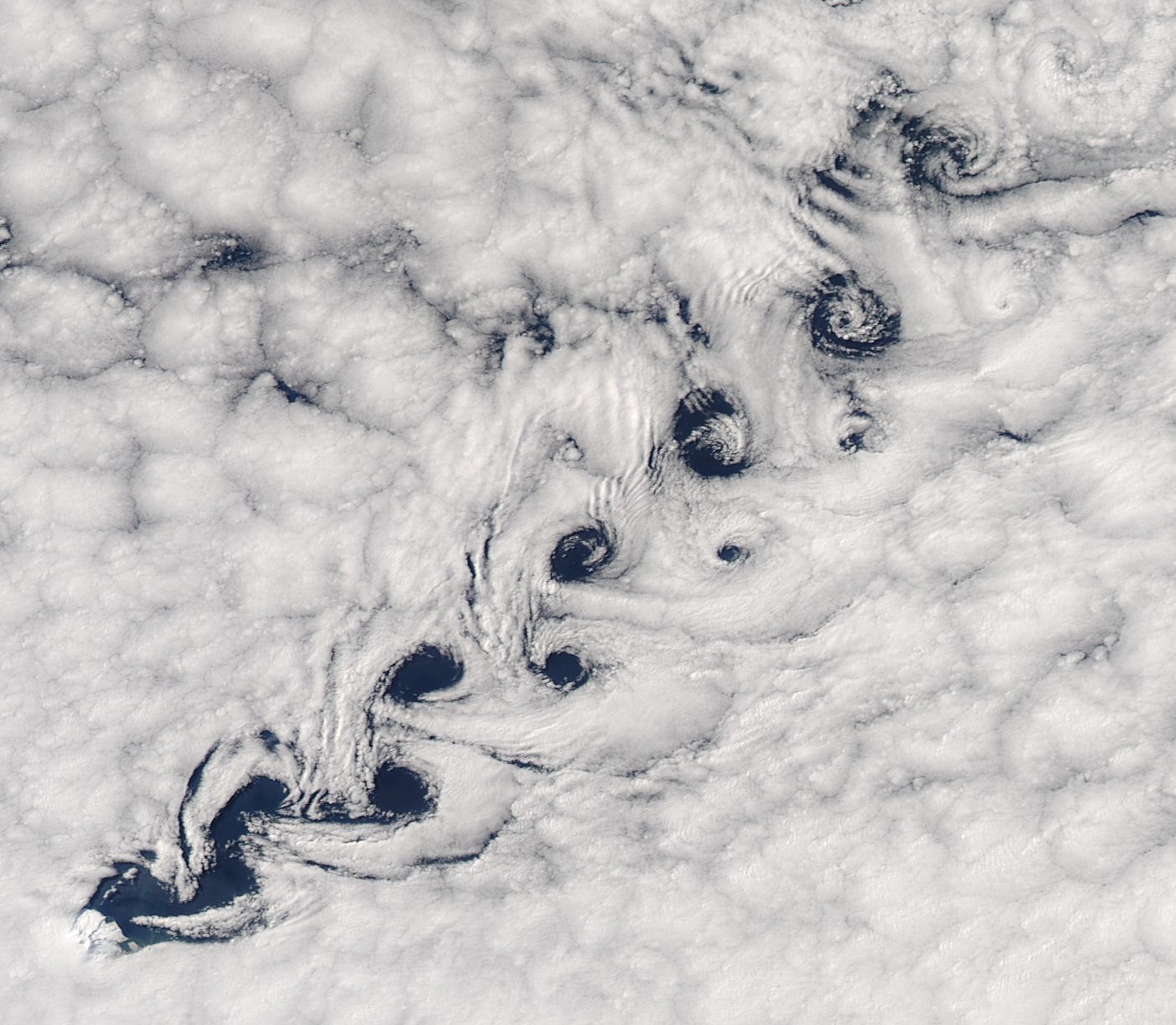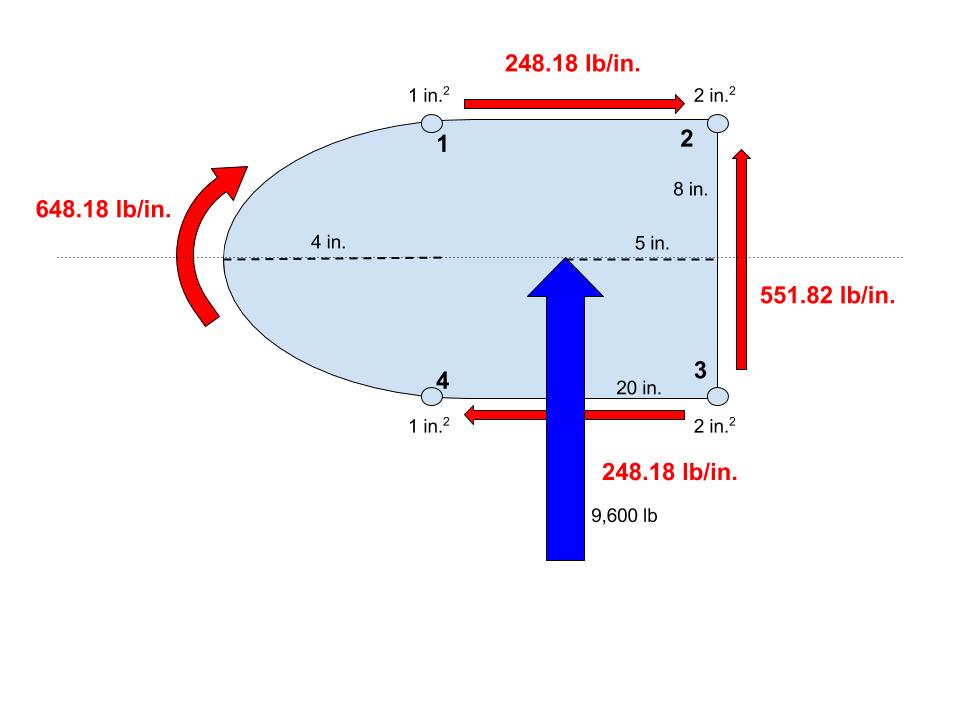|
Flukeprint
In marine biology, a flukeprint is a patch of calm water on the surface of the ocean, formed by the passing of a whale. Flukeprints may also be named by the word for them in the Inupiaq language, qala. As with other forms of animal tracks, flukeprints may be used in hunting, to follow whales that are invisible beneath the ocean surface, and to determine the size of an unseen whale. They have also been used for similar purposes by scientists studying whales. Fluid dynamics researchers have proposed multiple mechanisms for the formation of flukeprints, including vortex shedding from the fluke of the whale, the action of surfactants on the surface of the water, and shear flow in the interaction between water waves and the current caused by the passing whale. References {{reflist, refs= {{citation , last1 = Hanson , first1 = MB , last2 = Baird , first2 = RW , last3 = Ford , first3 = JKB , last4 = Hempelmann-Halos , first4 = J , last5 = Doornik , first5 = DM Van , l ... [...More Info...] [...Related Items...] OR: [Wikipedia] [Google] [Baidu] |
Animal Track
__notoc__ An animal track is an imprint left behind in soil, snow, or mud, or on some other ground surface, by an animal walking across it. Animal tracks are used by hunters in tracking their prey and by naturalists to identify animals living in a given area. Archaeology Foot tracks of ancient and extinct creatures notably dinosaurs that have been fossilized are of immense importance in archaeology and studied to understand the lives and behavior of such creatures. See also * Flukeprint, track of whale on ocean surface * Footprint * Pugmark *Spoor (animal) Spoor is a trace or a set of footprints by which the progress of someone or something may be followed. Spoor may include Animal tracks, tracks, Territorial marking#Scent marking, scents, or broken foliage. Spoor is useful for discovering or survey ... References External links Animal Tracks (African)Animal Tracks (Dinosaur)Animal Tracks (General)NatureTracking.com Animal Tracks WebsiteBear-Tracker Animal Tracks Websit ... [...More Info...] [...Related Items...] OR: [Wikipedia] [Google] [Baidu] |
Marine Biology
Marine biology is the scientific study of the biology of marine life, organisms that inhabit the sea. Given that in biology many scientific classification, phyla, family (biology), families and genera have some species that live in the sea and others that live on land, marine biology classifies species based on the environment (biophysical), environment rather than on taxonomy (biology), taxonomy. A large proportion of all life, life on Earth lives in the ocean. The exact size of this "large proportion" is unknown, since many ocean species are still to be discovered. The ocean is a complex three-dimensional world, covering approximately 71% of the Earth's surface. The habitats studied in marine biology include everything from the tiny layers of surface water in which organisms and abiotic items may be trapped in surface tension between the ocean and atmosphere, to the depths of the oceanic trenches, sometimes 10,000 meters or more beneath the surface of the ocean. Specific habi ... [...More Info...] [...Related Items...] OR: [Wikipedia] [Google] [Baidu] |
Whale
Whales are a widely distributed and diverse group of fully Aquatic animal, aquatic placental mammal, placental marine mammals. As an informal and Colloquialism, colloquial grouping, they correspond to large members of the infraorder Cetacea, i.e. all cetaceans apart from dolphins and porpoises. Dolphins and porpoises may be considered whales from a formal, Cladistics, cladistic perspective. Whales, dolphins and porpoises belong to the order Cetartiodactyla, which consists of even-toed ungulates. Their closest non-cetacean living relatives are the hippopotamuses, from which they and other cetaceans diverged about 54 million years ago. The two parvorders of whales, baleen whales (Mysticeti) and toothed whales (Odontoceti), are thought to have had their Most recent common ancestor, last common ancestor around 34 million years ago. Mysticetes include four Neontology, extant (living) Family (biology), families: Balaenopteridae (the rorquals), Balaenidae (right whales), Cetotheriid ... [...More Info...] [...Related Items...] OR: [Wikipedia] [Google] [Baidu] |
Hunting
Hunting is the Human activity, human practice of seeking, pursuing, capturing, and killing wildlife or feral animals. The most common reasons for humans to hunt are to obtain the animal's body for meat and useful animal products (fur/hide (skin), hide, bone/tusks, horn (anatomy), horn/antler, etc.), for recreation/taxidermy (see trophy hunting), although it may also be done for resourceful reasons such as removing predators dangerous to humans or domestic animals (e.g. wolf hunting), to pest control, eliminate pest (organism), pests and nuisance animals that damage crops/livestock/poultry or zoonosis, spread diseases (see varmint hunting, varminting), for trade/tourism (see safari), or for conservation biology, ecological conservation against overpopulation and invasive species (commonly called a culling#Wildlife, cull). Recreationally hunted species are generally referred to as the ''game (food), game'', and are usually mammals and birds. A person participating in a hunt is a ... [...More Info...] [...Related Items...] OR: [Wikipedia] [Google] [Baidu] |
Fluid Dynamics
In physics, physical chemistry and engineering, fluid dynamics is a subdiscipline of fluid mechanics that describes the flow of fluids – liquids and gases. It has several subdisciplines, including (the study of air and other gases in motion) and (the study of water and other liquids in motion). Fluid dynamics has a wide range of applications, including calculating forces and moment (physics), moments on aircraft, determining the mass flow rate of petroleum through pipeline transport, pipelines, weather forecasting, predicting weather patterns, understanding nebulae in interstellar space, understanding large scale Geophysical fluid dynamics, geophysical flows involving oceans/atmosphere and Nuclear weapon design, modelling fission weapon detonation. Fluid dynamics offers a systematic structure—which underlies these practical disciplines—that embraces empirical and semi-empirical laws derived from flow measurement and used to solve practical problems. The solution to a fl ... [...More Info...] [...Related Items...] OR: [Wikipedia] [Google] [Baidu] |
Vortex Shedding
In fluid dynamics, vortex shedding is an oscillating flow that takes place when a fluid such as air or water flows past a bluff (as opposed to streamlined) body at certain velocities, depending on the size and shape of the body. In this flow, vortices are created at the back of the body and detach periodically from either side of the body forming a Kármán vortex street. The fluid flow past the object creates alternating low-pressure vortices on the downstream side of the object. The object will tend to move toward the low-pressure zone. If the bluff structure is not mounted rigidly and the frequency of vortex shedding matches the resonance frequency of the structure, then the structure can begin to resonate, vibrating with harmonic oscillations driven by the energy of the flow. This vibration is the cause for overhead power line wires humming in the wind, and for the fluttering of automobile whip radio antennas at some speeds. Tall chimneys constructed of thin-walled ste ... [...More Info...] [...Related Items...] OR: [Wikipedia] [Google] [Baidu] |
Surfactant
Surfactants are chemical compounds that decrease the surface tension or interfacial tension between two liquids, a liquid and a gas, or a liquid and a solid. The word ''surfactant'' is a Blend word, blend of "surface-active agent", coined in 1950. As they consist of a water-repellent and a water-attracting part, they enable water and oil to mix; they can form foam and facilitate the detachment of dirt. Surfactants are among the most widespread and commercially important chemicals. Private households as well as many industries use them in large quantities as detergent, detergents and cleaning agents, but also for example as emulsion#Emulsifiers, emulsifiers, wetting agents, foaming agents, Antistatic agent, antistatic additives, or dispersants. Surfactants occur naturally in traditional plant-based detergents, e.g. Aesculus, horse chestnuts or Sapindus, soap nuts; they can also be found in the secretions of some caterpillars. Today one of the most commonly used anionic surfa ... [...More Info...] [...Related Items...] OR: [Wikipedia] [Google] [Baidu] |
Shear Flow
In solid mechanics, shear flow is the shear stress over a distance in a thin-walled structure.Higdon, Ohlsen, Stiles and Weese (1960), ''Mechanics of Materials'', article 4-9 (2nd edition), John Wiley & Sons, Inc., New York. Library of Congress CCN 66-25222 In fluid dynamics, shear flow is the flow ''induced'' by a force in a fluid. In solid mechanics For thin-walled profiles, such as that through a beam or semi-monocoque structure, the shear stress distribution through the thickness can be neglected. Furthermore, there is no shear stress in the direction normal to the wall, only parallel. In these instances, it can be useful to express internal shear stress as shear flow, which is found as the shear stress multiplied by the thickness of the section. An equivalent definition for shear flow is the shear force ''V'' per unit length of the perimeter around a thin-walled section. Shear flow has the dimensions of force per unit of length. This corresponds to units of newtons per meter ... [...More Info...] [...Related Items...] OR: [Wikipedia] [Google] [Baidu] |
Water Wave
In fluid dynamics, a wind wave, or wind-generated water wave, is a surface wave that occurs on the free surface of bodies of water as a result of the wind blowing over the water's surface. The contact distance in the direction of the wind is known as the '' fetch''. Waves in the oceans can travel thousands of kilometers before reaching land. Wind waves on Earth range in size from small ripples to waves over high, being limited by wind speed, duration, fetch, and water depth. When directly generated and affected by local wind, a wind wave system is called a wind sea. Wind waves will travel in a great circle route after being generated – curving slightly left in the southern hemisphere and slightly right in the northern hemisphere. After moving out of the area of fetch and no longer being affected by the local wind, wind waves are called '' swells'' and can travel thousands of kilometers. A noteworthy example of this is waves generated south of Tasmania during heavy wi ... [...More Info...] [...Related Items...] OR: [Wikipedia] [Google] [Baidu] |
Hakai Magazine
The Hakai Institute (formerly the Hakai Beach Institute) is a scientific research, teaching and meeting center established by Eric Peterson and Christina Munck on Calvert Island, a remote island on the exposed Pacific edge of the Great Bear Rainforest on the Central Coast of British Columbia, Canada. The Hakai Institute is a program of the Tula Foundation, a British Columbia-based private foundation also founded by Peterson and Munck. The Hakai Institute specializes in "long-term ecological research". It has active research programs in archaeology, earth sciences, terrestrial ecology and marine ecology. The Hakai Institute enjoys partnerships with neighbouring First Nations, local schools, government agencies and the BC universities. History Hakai Institute was founded in 2002 by the Tula Foundation with the goal of purchasing and preserving land along the Central Coast. Over time, the focus shifted to scientific research. In 2008, the institute partnered with British Columbia ... [...More Info...] [...Related Items...] OR: [Wikipedia] [Google] [Baidu] |








